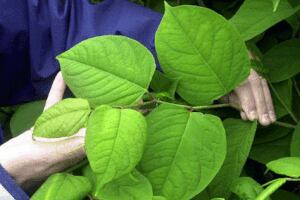Warning after danger plants spotted in Shrewsbury
A warning was issued today after dangerous plants which cost the British economy more than £1.7 billion each year were spotted growing in parts of Shrewsbury.

A warning was issued today after dangerous plants which cost the British economy more than £1.7 billion each year were spotted growing in parts of Shrewsbury.
The Environment Agency says Japanese knotweed and Himalayan balsam have been found growing close to the railway bridges in Shrewsbury town centre.
To deal with the outbreak, the agency has launched a new smartphone app called PlantTracker which shows how to identify both species as well as a third invasive plant called floating pennywort, and enables users to easily submit photos when they find one.
The app has been developed as part of the NatureLocator project, led by the University of Bristol, to enable members of the public to take part in biological survey work via their mobile phones.
It is a pilot project and the app is being trialled in the Midlands region and is expected to be rolled out across the whole of the UK eventually. The problem plants are foreign invaders which grow quickly, smothering native species and threatening the local wildlife eco-system.
Claire Quigley, of the Environment Agency, said: "There are a number of sites in Shrewsbury which have problems with Himalayan balsam and Japanese knotweed.
"These plants are easily found along the river corridors and green areas. Floating pennywort is not present in Shropshire but we know that it is in the East Midlands. This is why it is really important that people keep their eye out for floating pennywort as we would want to treat and monitor any new outbreaks."
She added: "We'd love everyone to help us to track them down."
To download the free app search for planttracker in the iTunes App Store and Google Play Store or go to the website at planttracker.naturelocator.org.





